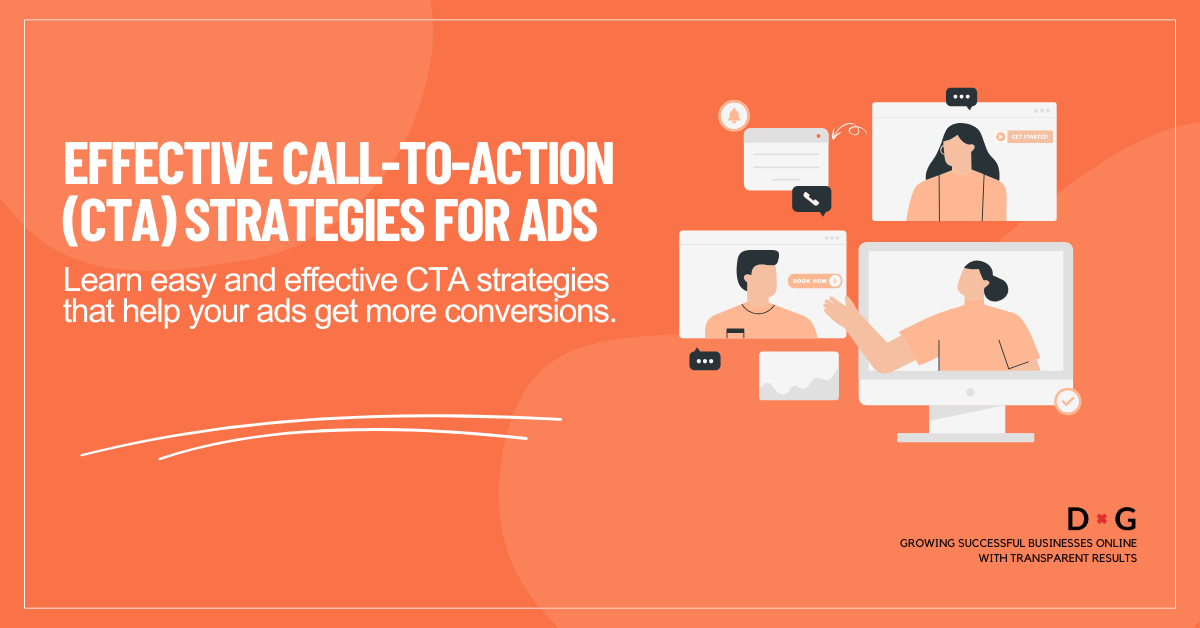
In advertising, less is often more especially when it comes to your Call-To-Action (CTA). Every ad should guide people to take action, like making a purchase, signing up, or clicking a link. However many ads don’t perform well because the message is unclear or confusing.
In this blog, we’ll cover one of the most common advertising mistakes. You’ll learn what a CTA is, why it’s important, the do’s and don’ts of using CTAs in your ads, and how following one simple rule can improve your results.
What is a Call-To-Action (CTA)?
A (CTA) or Call-To-Action is a short message that tells people exactly what to do next. It’s usually a button or link you’ll see in an ad, on a website, in an email, or even on social media.
CTAs may be brief, but they have a big impact. They are considered to bridge the gap between interest and action, guiding users from simply seeing your message to taking the next step.
Here are some common examples of CTAs:
- “Buy Now”
- “Sign Up”
- “Get a Free Quote”
- “Learn More”
- “Download Now”
Your CTA connects your message to the action you want users to take. Imagine someone sees your ad and likes what they see; without a CTA, they might not know what to do next.
Think of a CTA as a signpost that points the way forward. Whether you want users to visit your website, book a call, or make a purchase, your CTA is what guides them there.
Why is a Call-To-Action (CTA) Needed?
A CTA is a must-have in every ad or marketing message.
Here’s why:
It gives direction
People need clear instructions on what to do next. A CTA makes it clear. Without it, they might be interested but do nothing because they’re unsure what to do.
It moves people to action
A well-written CTA turns interest into action. It tells the person, “Here’s your next step,” and makes it easy for them to take it.
It helps you reach your goal
Every ad has a goal. More sales, more sign-ups, more traffic. The CTA is what helps you reach that goal. It connects your message to a result.
It improves ad performance
Ads with a clear CTA often get more clicks, more engagement, and better results. When people know what to do, they’re more likely to do it.
It reduces confusion
A CTA removes guesswork. Instead of wondering what happens next, the user knows: click this button, take this action.
Why One Call-To-Action (CTA) Works Best
People don’t want to think too hard. If you give them too many choices “Buy Now”, “Subscribe”, “Contact Us” they may get confused and choose none.
That’s because:
- Too many options cause hesitation
- Confused customers don’t act
- One clear CTA gives people a simple decision
This is why one ad should focus on one CTA only. Keep it simple, direct, and focused.
Do’s and Don’ts of Call-To-Action (CTA) in Ads
Writing a strong CTA is more than just picking the right words. It’s about knowing what works and what doesn’t.
Here are some simple do’s and don’ts to help you create clear, effective CTAs that get results.
Do’s
- Use one clear CTA per ad.
Stick to one action you want people to take. - Be specific.
Be direct about the action you want the user to take. A clear CTA like ‘Download Your Free Guide’ is more effective than a vague one like ‘Click Here’.
- Use strong action words.
Use verbs like Buy, Get, Join, Book, or Start. - Make sure the CTA matches your goal.
If your goal is bookings, say “Book Now”, not “Learn More”. - Keep the message and CTA aligned.
If the ad says “Free Trial”, make sure the landing page offers a free trial too. - Place the CTA in a clear spot.
Make it easy to find usually at the bottom of the ad or near the image.
Don’ts
- Don’t use multiple CTAs in one ad.
This causes confusion and lowers conversion rates. - Don’t be vague.
“Click Here” or “Discover More” might sound fancy but doesn’t tell the user what they’ll get. - Don’t mix your messages.
If your ad is about getting a quote, don’t suddenly push for a sale or sign up. - Don’t forget about mobile users.
Make sure your CTA button is easy to tap on smaller screens. - Don’t make users scroll to find it.
The CTA should be easy to spot without having to scroll down too far.
Conclusion
A strong ad has one goal and one clear Call-To-Action (CTA). Offering too many choices can overwhelm people, making them less likely to take action. That’s why the simple CTA rule is so powerful:
One ad. One action. One outcome.
Keep your CTA short, specific, and direct. Make sure it lines up with the goal of your ad and your landing page. When everything works together, people are more likely to take action and your ads will perform better.
So next time you write an ad, remember: Less confusion, more clarity. One CTA is all you need.
